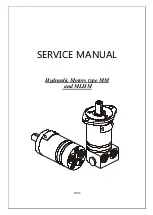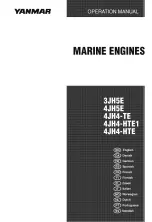
Lead
• When working with lead or lead-containing compounds, avoid direct contact to the skin and do not
inhale lead vapors.
• Adopt suitable measures to avoid the formation of lead dust.
• Switch on extraction system.
• Wash hands after contact with lead or lead-containing substances.
Compressed air
Observe special safety precautions when working with compressed air:
• Pay special attention to the pressure level in the compressed air network and pressure vessel.
• Assemblies and equipment to be connected must either be designed for this pressure, or, if the per‐
mitted pressure for the connecting elements is lower than the pressure required, a pressure reducing
valve and safety valve (set to permitted pressure) must form an intermediate connection.
• Hose couplings and connections must be securely attached.
• Wear goggles when blowing off components or blowing away chips.
• Provide the snout of the air nozzle with a protective disk (e.g. rubber disk).
• First shut off compressed air lines before compressed air equipment is disconnected from the supply
line, or before equipment or tool is to be replaced.
• Unauthorized use of compressed air, e.g. forcing flammable liquids (danger class AI, AII and B) out of
containers, results in a risk of explosion.
• Forcing compressed air into thin-walled containers (e.g. containers made of tin, plastic and glass) for
drying purposes or to check for leaks, results in a risk of bursting.
• Carry out leak test in accordance with the specifications.
Painting
• When carrying out painting work outside the spray stands provided with fume extraction systems, en‐
sure that the area is well ventilated. Make sure that neighboring work areas are not impaired.
• No open flames.
• No smoking.
• Observe fire prevention regulations.
• Always wear a mask providing protection against paint and solvent vapors.
Liquid nitrogen
• Store liquid nitrogen only in small quantities and always in regulation containers without fixed covers.
• Avoid body contact (eyes, hands).
• Wear protective clothing, protective gloves, closed shoes and protective goggles / safety mask.
• Make sure that working area is well ventilated.
• Avoid all knocks and jars to the containers, fixtures or workpieces.
Acids and alkaline solutions
• When working with acids and alkalis, wear protective goggles or face mask, gloves and protective
clothing.
• If such solutions are spilled onto clothing, remove the affected clothing immediately.
• Rinse injured parts of the body thoroughly with clean water.
• Rinse eyes immediately with eyedrops or clean tap water.
MS150054/02E 2012-02 | Safety | 17
TIM-ID: 0000000880 - 014
















































